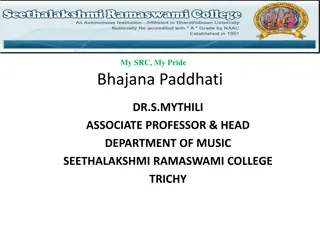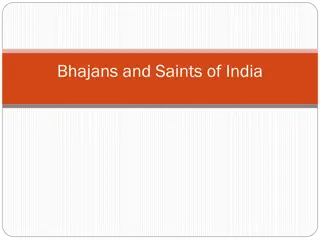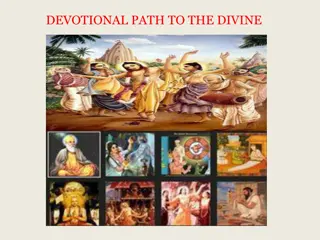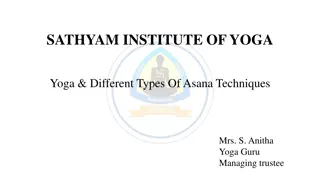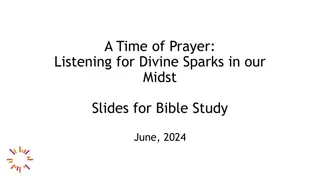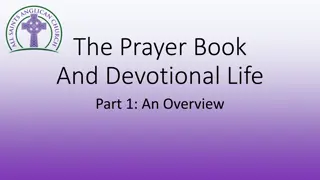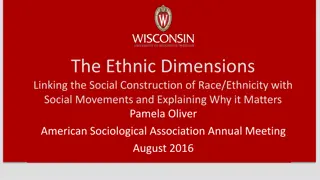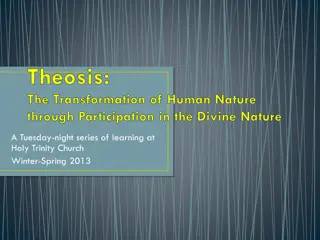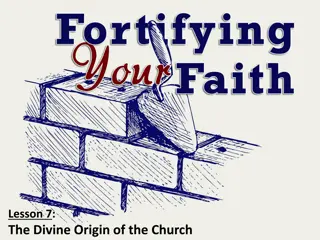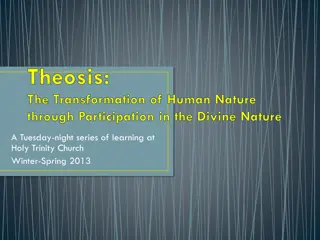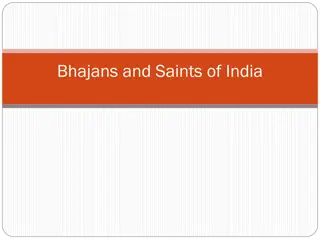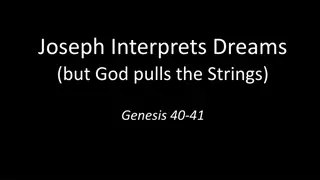Devotional Paths to the Divine: A Journey Through Bhakti Movements
Explore the rich history of devotional paths to the divine, from rituals of worship to intense love of God through different bhakti and Sufi movements. Discover the evolution of the idea of a Supreme God and the emergence of new forms of bhakti in South India led by Nayanars and Alvars. Delve into the diverse backgrounds of these saints and their compositions praising Shiva and Vishnu, creating a spiritual legacy that continues to inspire seekers today.
Download Presentation

Please find below an Image/Link to download the presentation.
The content on the website is provided AS IS for your information and personal use only. It may not be sold, licensed, or shared on other websites without obtaining consent from the author. Download presentation by click this link. If you encounter any issues during the download, it is possible that the publisher has removed the file from their server.
E N D
Presentation Transcript
DEVOTIONAL PATHS TO THE DIVINE People perform rituals of worship, or singing bhajans, kirtans or qawwalis, or even repeating the name of God in silence. Intense devotion or love of God is the legacy of various kinds of bhakti and Sufi movements that have evolved since the eighth century.
THE IDEA OF A SUPREME GOD Before large kingdoms emerged, different groups of people worshipped their own Gods and Goddesses. As people were brought together through the growth of towns, trade and empires, new ideas began to develop. The idea that all human beings are not equal at birth gained ground during this period. The idea of a Supreme God who could deliver humans from bondage through devotion or bhakti emerged. Gods and goddesses worshipped in different areas came to be identified with Shiva, Vishnu or Durga.
A NEW KIND OF BHAKTI IN SOUTH INDIA NAYANARS AND ALVARS The seventh to ninth centuries saw the emergence of a new religious movement, led by Nayanars (saints devoted to Shiva) and Alvars (saints devoted to Vishnu). They were sharply critical of the Buddhists and Jainas and preached ardent love of Shiva or Vishnu as the path to salvation. The Nayanars and Alvars went from place to place composing exquisite poems of praise of the deities enshrined in the village they visited and set them to music. The Chola and Pandya kings built elaborate temples around many of the shrines.
Nayanars There were There were 63 different caste backgrounds such as potters, different caste backgrounds such as potters, untouchable workers, peasants, hunters, untouchable workers, peasants, hunters, soldiers, soldiers, Brahmanas Brahmanas and chiefs. The best known among them were The best known among them were Appar Sambandar Sambandar, , Sundarar Sundarar and Manikkavasagar Manikkavasagar. . There are two sets of compilations of their There are two sets of compilations of their songs songs Tevaram Tevaram and and Tiruvacakam 63 Nayanars Nayanars, who belonged to , who belonged to Nayanars Nayanars and chiefs. Appar, , and Tiruvacakam
Alvars Alvars There were 12 There were 12 Alvars equally divergent backgrounds, the equally divergent backgrounds, the best known being best known being Periyalvar Periyalvar, his daughter daughter Andal Andal, , Tondaradippodi Tondaradippodi Alvar Alvar and and Nammalvar Nammalvar. . Their songs were compiled in Their songs were compiled in the the Divya Divya Prabandham Prabandham Alvars, who came from , who came from , his A
HAGIOGRAPHY Writing Of Saints SHANKARA Advaita RAMANUJA Vishishtadvaita BASAVANNA Virashaivism
PHILOSOPHY AND PHILOSOPHY AND BHAKTI BHAKTI Shankara Shankara, the most influential philosophers of India, was born in Kerala in the 8th century. He was an advocate of Advaita doctrine of the oneness of the individual soul and the Supreme God which is the Ultimate Reality. He taught that Brahman, the only or Ultimate Reality, was formless and without any attributes. He considered the world around us to be an illusion or Maya, and preached renunciation of the world. He advocated adoption of the path of knowledge to understand the true nature of Brahman and attain salvation Advaita or the
Ramanuja was born in Tamil Nadu in the 11th century. He was deeply influenced by the Alvars. According to him the best means of attaining salvation was through intense devotion to Vishnu. Vishnu in His grace helps the devotee to attain the bliss of union with Him. He propounded the doctrine of Vishishtadvaita or qualified oneness in that the soul, even when united with the Supreme God, remained distinct. Ramanuja s doctrine greatly inspired the new strand of bhakti which developed in north India subsequently.
Basavanna Virashaivism movement was initiated by Basavanna and his companions Allama Prabhu and Akkamahadevi in Karnataka in the mid-12th century. They argued strongly for equality of all human beings, opposed Brahmanical ideas of caste and treatment of women. They were against all forms of rituals and idol worship.
Nancy George AECS, Mysore

 undefined
undefined





